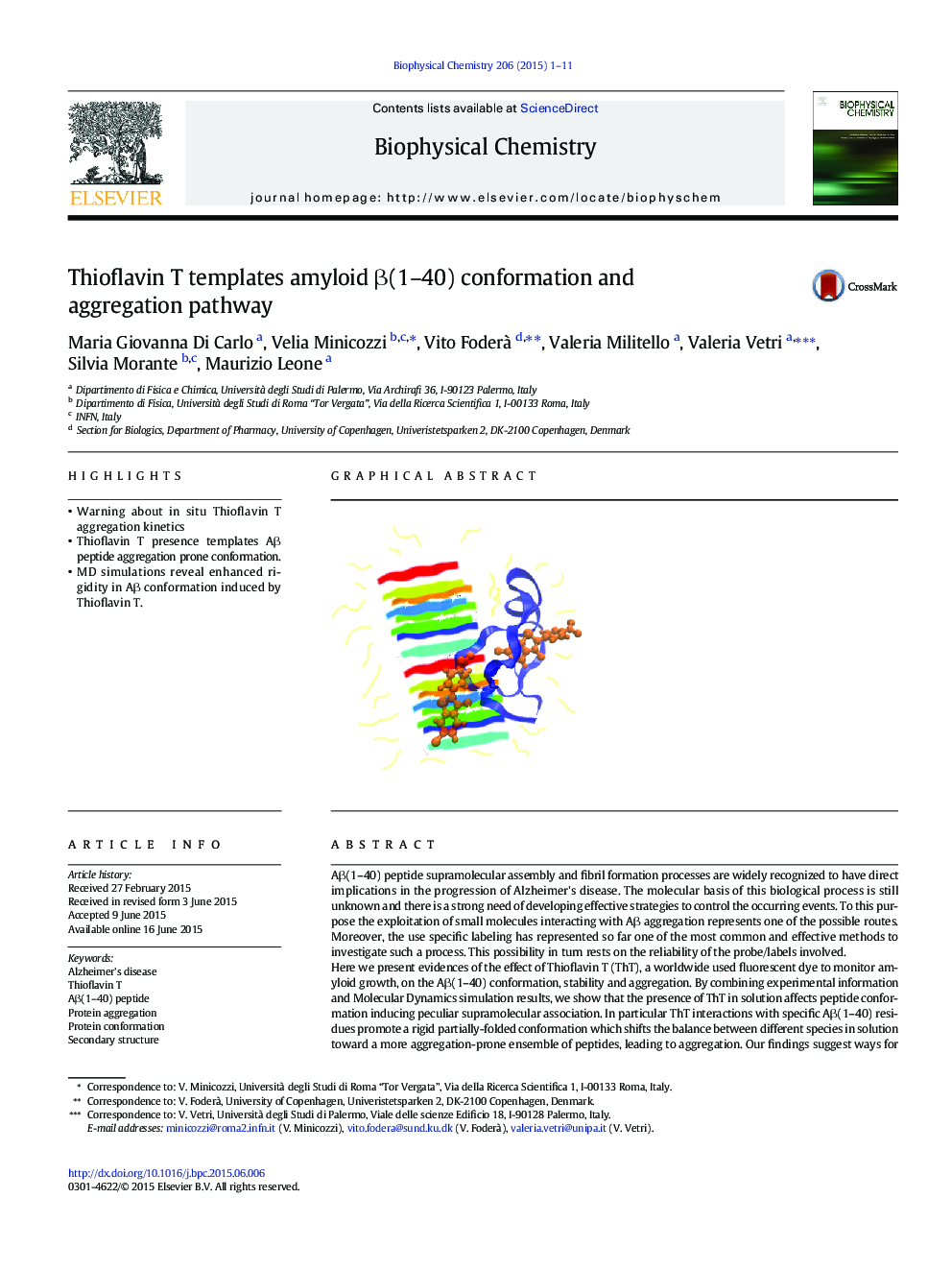| کد مقاله | کد نشریه | سال انتشار | مقاله انگلیسی | نسخه تمام متن |
|---|---|---|---|---|
| 5370776 | 1503913 | 2015 | 11 صفحه PDF | دانلود رایگان |

• Warning about in situ Thioflavin T aggregation kinetics
• Thioflavin T presence templates Aβ peptide aggregation prone conformation.
• MD simulations reveal enhanced rigidity in Aβ conformation induced by Thioflavin T.
Aβ(1–40) peptide supramolecular assembly and fibril formation processes are widely recognized to have direct implications in the progression of Alzheimer's disease. The molecular basis of this biological process is still unknown and there is a strong need of developing effective strategies to control the occurring events. To this purpose the exploitation of small molecules interacting with Aβ aggregation represents one of the possible routes. Moreover, the use specific labeling has represented so far one of the most common and effective methods to investigate such a process. This possibility in turn rests on the reliability of the probe/labels involved.Here we present evidences of the effect of Thioflavin T (ThT), a worldwide used fluorescent dye to monitor amyloid growth, on the Aβ(1–40) conformation, stability and aggregation. By combining experimental information and Molecular Dynamics simulation results, we show that the presence of ThT in solution affects peptide conformation inducing peculiar supramolecular association. In particular ThT interactions with specific Aβ(1–40) residues promote a rigid partially-folded conformation which shifts the balance between different species in solution toward a more aggregation-prone ensemble of peptides, leading to aggregation. Our findings suggest ways for developing strategies to reverse and block aggregation or to stimulate supramolecular assembly and consequently reduce the presence of transient oligomers. This investigation underlines the need of developing label-free techniques for unbiased quantitative studies of Aβ(1–40) aggregation processes.
Figure optionsDownload as PowerPoint slide
Journal: Biophysical Chemistry - Volume 206, November 2015, Pages 1–11